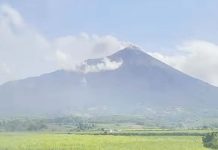[av_one_full first min_height=” vertical_alignment=” space=” custom_margin=” margin=’0px’ padding=’0px’ border=” border_color=” radius=’0px’ background_color=” src=” background_position=’top left’ background_repeat=’no-repeat’ animation=”]
[av_heading heading=’Boracay hotels, resorts may lose permits ‘ tag=’h3′ style=’blockquote modern-quote’ size=” subheading_active=’subheading_below’ subheading_size=’15’ padding=’10’ color=” custom_font=”]
BY GLENDA SOLOGASTOA
[/av_heading]
[av_textblock size=” font_color=” color=”]
ILOILO City – Resorts and hotels in Boracay not connected to the world-famous island’s sewerage system could lose their business permits.
The Department of Environment and Natural Resources (DENR) has started checking if these hotels and resorts are disposing their wastewater directly to Boracay’s waters.
According to Regional Director Jim Sampulna, the inspection kicked off two weeks ago and would continue for three more months.
In a span of 14 days, DENR inspectors already discovered several violators. Sampulna declined to identify the resorts and hotels but described them as “big.”
“Matapos ang investigation at hindi pa rin sila naka-connect, the Department of Tourism (DOT) agreed to cancel their accreditation. DENR, on the other hand, will cancel their Environmental Compliance Certificate (ECC),” said Sampulna.
The cancellation of the DOT accreditation and ECC would result to the revocation of their business permits, said the director.
DENR will also be inspecting households in Boracay but for now the focus is on the hotels and resorts.
“Very serious” was how Sampulna described the wastewater problem in Boracay prior to the installation of sewerage treatment plants in the island. One of these treatment plants is being operated by Boracay Island Water Company (BIWC) partially owned by the DOT – Tourism Infrastructure and Enterprise Zone Authority and a private corporation.
As far as solid waste (garbage) is concerned, Sampulna said, the local government of Malay, Aklan which has jurisdiction over Boracay was requiring resorts, hotels and households to observe “segregation at source.”
Garbage is regularly transported from the island to two sanitary landfills in mainland Malay, he added.
But another sanitary landfill may be established in Malay, said Sampulna.
Untreated wastewater was causing algal blooms in Boracay Island, a research of DENR-6 last year showed.
It was a repeat of a previous research that had similar results, said Sampulna.
The recurring appearance of green algae in Boracay’s otherwise white-sand beach has raised concern on the safety of tourists and the island’s ecological health.
Algae are attracted to untreated wastewater, said Sampulna.
He specifically cited soap and detergents in untreated wastewater being flushed out to the sea.
Sampulna did not discount the possibility that some establishments and residences may be dumping untreated wastewater into the sea.
In a previous interview, DOT regional director Helen Catalbas said she wasn’t sure if untreated wastewater was behind the recurrence of green algae in Boracay, the country’s top tourist destination.
Wastewater should first be treated at BIWC’s sewerage treatment plant before it is released to the sea.
“I do not know. I cannot say for sure kun bala ang mga lumot has something to do sa mga wala nag-tap sa BIWC pipes,” said Catalbas.
DENR is in a better position to explain, she said.
During the months of February to May each year, water in some areas of Boracay appears green. According to the Boracay Foundation, Inc., however, this is due to the seasonal bloom of green algae.
This phenomenon had been observed by the locals even before Boracay became a prime destination flocked by tourists and crowded with development, it stressed.
Earlier, Tourism secretary Wanda Corazon Teo said she expected more tourists visiting the Philippines this year but warned that the surge could consequently lead to an increase in the amount of waste produced./PN
[/av_textblock]
[/av_one_full]







